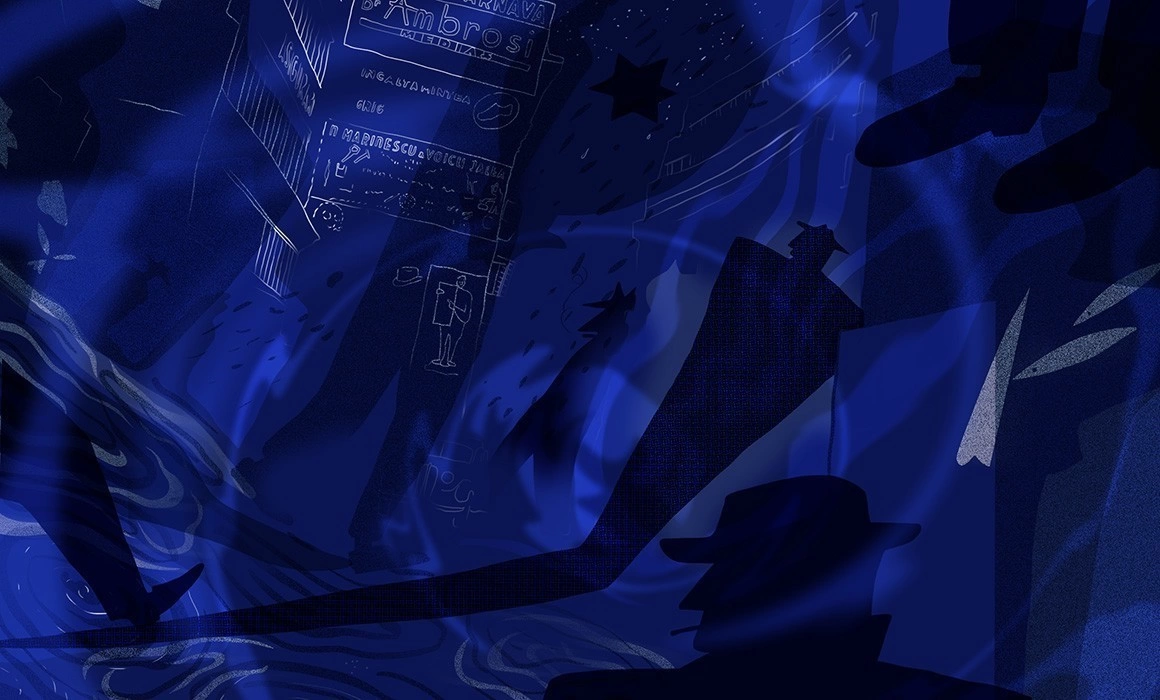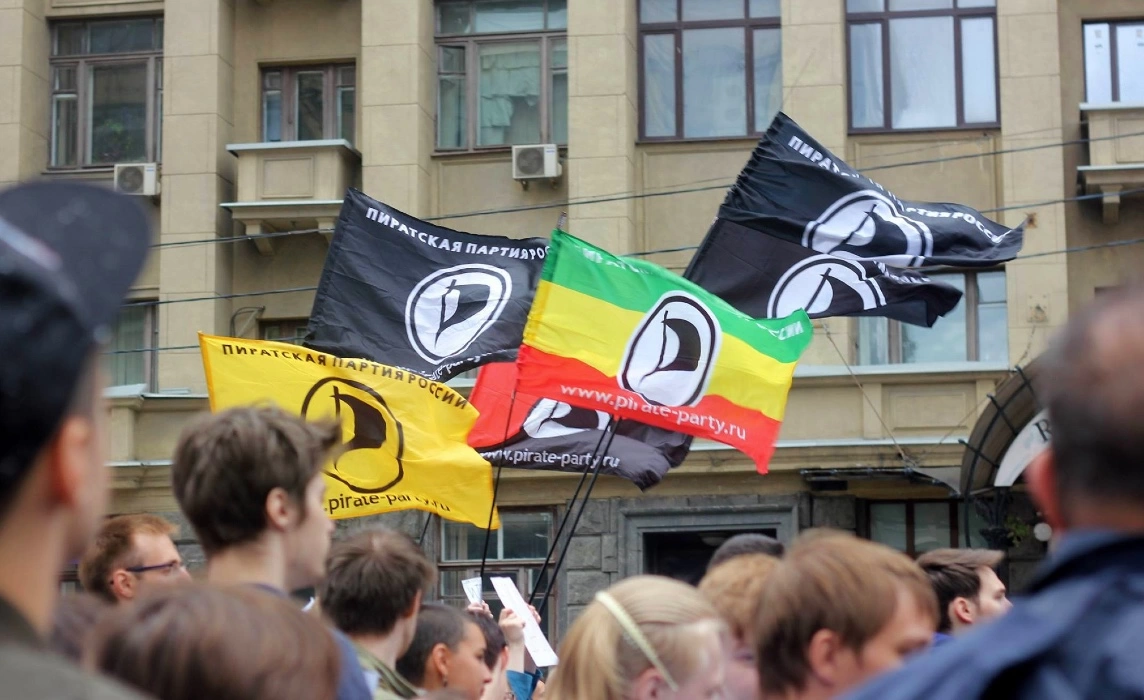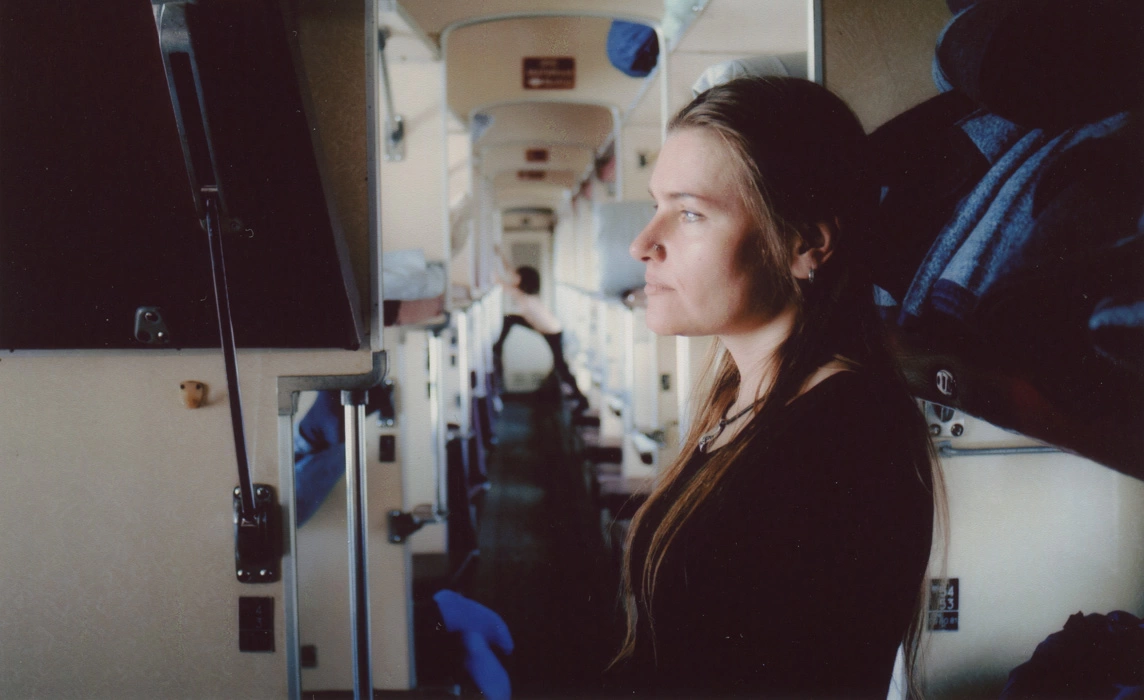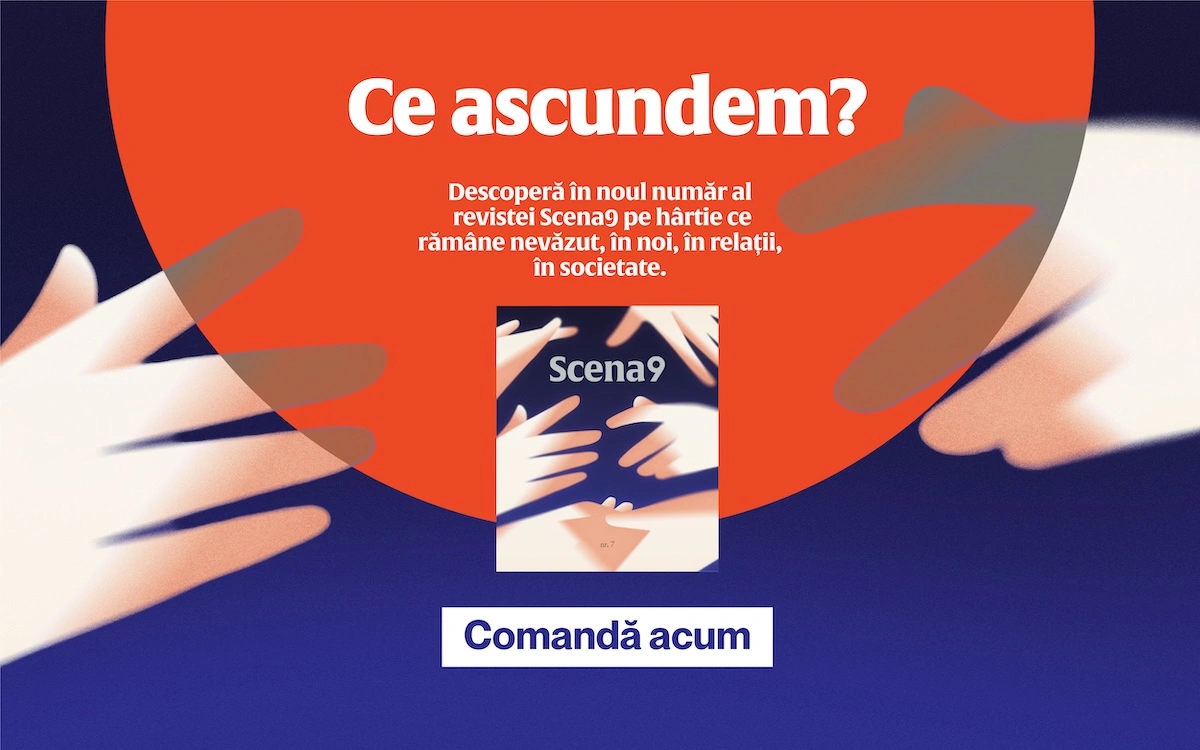He's doing quite well, thank you very much. For Two Thousand Years, the novel that recounts the terrible experiences of a young Jew in interwar Romania, was published early this year in the Penguin Modern Classics collection. In 1934, Sebastian noted with nearly impossible clarity of mind the grinding down of humanity, the hatred, and the desolation of Romania’s ferociously anti-Semitic years. Eighty-two years later, British readers got to discover a universal writer.
In England, the first print run was sold out within the first month of publishing. In Romania, the book can only be found in antique book stores. It was last printed ten years ago.
“He wonderfully captures the atmosphere of pre-war Romania in all its complexity, all the beauty and the horror… I love Sebastian for his lightness, for his wit”, John Banville, an Irish writer of 17 novels, with a Booker Prize to his name, tells the BBC4. “Mihail Sebastian is now regarded as one of the foremost chroniclers of the rise of nazism in civilised Europe”, Paul Bailey writes in a wonderful review for The Guardian. “‘Mordant, meditative, knotty, provocative... More than a fascinating historical document, it is a coherent and persuasive novel. Penguin should be applauded for finally bringing this book to an anglophone audience, Toby Linchtig writes for the Financial Times. “Eerily prophetic… A brilliant translation of a most unusual novel. For Two Thousand Years is a book of truths”, Eileen Battersby raises the stakes in the Irish Times. “One of the most unusual, seductive and beautiful books I’ve read in years. (...) A book which needs to be read and re-read and which, over years, will become a reliable friend for life”, writes John Self, a blogger and reviewer for The Guardian.
“What matters is whether I can understand calmly, critically, what is happening now to myself and others. Otherwise…”
How did Mihail Sebastian end up among the Modern Classics at Penguin, one of the major publishing houses of the English-speaking world? Who was it that brought him into the same exclusive club that hosts Nabokov, Ginsberg, Orwell, Camus, and Kafka? Casiana Ioniță, a 32-year-old from Ploiești, who studied literature at Harvard and Columbia. In 2014, when she got the job at Penguin, her coworkers asked her if she knew of any Romanian books that deserved to be published in the Modern Classics collection. Cioran and Ionesco had already been translated. “The first writer I inevitably thought of was Mihail Sebastian—he seemed to me the most universal, through his experiences with the interwar era, the incredibly lucid way he responded to the era’s political passions. Perhaps because he was so balanced and accepted no ideologies, Sebastian was constantly under attack: first during the 30s, when For Two Thousand Years was first published and he was accused of betrayal by the Zionists, the legionaries, and the communists. To have them all agree was quite an achievement. And then once more, in the 90s, when his Diary was uncovered, along with its tales of the anti-Semitic sentiments proliferated by Eliade, Cioran, and others in their inner circle. This bothered many of those who believed the interwar era was heaven on Earth”, Cristiana wrote to me in a long email.
The Diary had already been published in English some ten years before, to wide acclaim from literary giants Arhur Miller and Philip Roth, but For Two Thousand Years had yet to be translated. “So, after I discussed the idea with all my colleagues, I got to thinking who might be able to translate it. And, as good timing would have it, I found out that Philip Ó Ceallaigh, who had written a great piece on Sebastian and the way Romanians see themselves as victims, had already translated the entire novel and shelved it, because no publishers seemed interested in it. Hard to find a more adequate translator than Philip, who’s an amazing writer and also understands the historic context very well—better than I do, at times, even though I grew up in Romania and he didn’t.”
Philip Ó Ceallaigh is an Irish writer, who took up arms and suitcases and moved to Romania (“arms and suitcases” is a French phrase, do excuse its presence in such a British context). He’s been living in Bucharest since 2010. He’s published two short story collections (you can also find them in the Romanian translation at Polirom) and received the Ronney Prize for Irish literature. “I think I first read For Two Thousand Years in 2005. By accident. A friend gave me the book—I hadn’t heard of the author, his famous novel, or the polemic it had roused in 1990s Romania. Although I wasn’t accustomed to reading in Romanian, the voice of the narrator in For Two Thousand Years won me over from the get-go: his lonesome tone, his vocation of casting a detached glance over the world around him, his personal suffering, and the fact that he’d done it! He’d done it so well that I instantly thought—not just that I’d gleaned something about Romania, how it looked eighty years ago—but that he was telling me something about present day Romania. I was also astounded that Romanians don’t discuss certain periods and issues within their history, such as the Holocaust. Or, if they do, they articulate a fictional narrative. I started translating the book just so I could get closer to the voice and the character I admired”, Philip says. He adds that he’s neither a professional translator, nor was he acting like one. It took three years. And then, for five years and a bit more, the manuscript was shelved. Until Casiana showed up.
“Mihail Sebastian reached British bookstores over eighty years after getting attacked from all sides for trying to understand history in the making, understand why it was allowed to yell Death to Kikes! in the street, right next to him, as if this was entirely normal. The most beautiful part about the book’s reception thus far is that he's drawn comparisons to Pessoa, Bassani, and Zweig, and is regarded as an author telling a universal story. One that could have been written yesterday, today, or tomorrow, as Irish writer Colin Barrett put it so well”, Casiana explains.
“I’ll always resist invitations to fervour, and will resist the more tempting ones all the more resolutely. Letting yourself be swept along on the current is too attractive to be trusted.”
I was curious to find out how the Brits read Sebastian, so I asked a bookstore keeper and two bloggers. Liam Bishop, who writes about books for Curb Complex, hadn’t read any Romanian literature until Sebastian. Since this was a book published 82 years ago, he thought “it must have 'something to say' for the largest publishing house in the world to be republishing it now.” He was expecting a narrative typical of Holocaust writers, but discovered “this ironic, abstract, yet still very serious piece of work, with a great equanimity between pathos and bathos. I didn’t know what bathos was, so I gave it a quick Google search. Oh, it’s a term coined by Alexander Pope in 1727 that refers to failed attempts at reaching pathos. “You don't really learn anything about the central character, or 'discover' anything about him, it's a kind of anti-discovery, yet we still see everything through the lens of him, which is why it gives this great humour and great feeling.” Liam works Sebastian in among Dostoyevsky, Kafka, and Pessoa. He sees him as particularly akin to Kafka, “as they are able to inject this lightness” into the horrors. He likes the fact that Sebastian is no moralist, he doesn’t set out to teach you this grand lesson of history, but constantly opposes any type of dogmatic thought. It seems to Bishop that the Western world is entering a new existential crisis, the threat of extremism is present once more, and Sebastian’s character really makes you wonder what it means to show real character, have a real destiny, and “simply what the hell is 'real'”. Liam Bishop says that For Two Thousand Years is not just one of the best books he’s read over the past few years, but also one of the best in his “arguably short” life.
Tony Malone, also a blogger, admits he knew next to nothing about Sebastian, when he got the book from Penguin. He was convinced by the novel's coming-of-age story, in the vein of such writers as Goethe and Joyce, as well as by the historic insight on Bucharest in the 1920s and 30s. “Of course, many readers will also be attracted by the Jewish angle, even if the writer provides a very different spin on this with his constant, sardonic self-criticism.” After all is said and done, Tony says that, most importantly, “it is simply a well-written book”. And, “luckily Ó Ceallaigh's translation is excellent”.
Gary Perry is a bookstore keeper at Foyles, a chain of libraries in London. Or, as he introduced himself via email, he’s the Assistant Head of Fiction at the chain’s flagship store. “Thank you so very much for the email. It's always a pleasure to talk about Sebastian. From the moment I opened the proof copy, I knew that I was reading something astonishing.” I had to read that twice, to make sure I’d read it properly. Then I went to Perry's Twitter account and saw he had just cheerfully shared a picture of the “Best-selling fiction books at the store”, in which Sebastian was number 8, just narrowly trailing Ishiguro. “From the moment I opened the proof copy, I knew that I was reading something astonishing.” Gary reads a lot of literature translated from foreign languages, so he can recommend his readers authors from areas as diverse as possible. He had read Cărtărescu’s Blinding and Blecher’s Adventures in Immediate Irreality, he’d been taken with the dream-like, intellectualist prose. He possibly took a bit more of a shining to Sebastian. “The anxieties present in Sebastian's novel strike a chord with me and, I would imagine, with other British readers. The current refugee crisis, questions surrounding Britain's future in the EU, as well as the continuing Palestine-Israel conflict, contribute to an interest in issues surrounding European identity and belonging. I think Sebastian has much to tell us on this front.”
“...that age-old call for death, which is always present somewhere on Romanian streets, but audible only at certain moments. Year after year it resounds in the year of the common man, who is indifferent, in a hurry, with other things on his mind. Year after year it rumbles and echoes in street and byway, and nobody hears it. And one day, out of nowhere, behold how it suddenly pierces the wall of deafness around it, and issues from every crack and from under every stone.”
At an event hosted by the London Romanian Cultural Institute in March, someone asked why For Two Thousand Years is not in the textbooks. The question struck me as legitimate. This book, written with admirable economy of words, explicitly disavowing emphatic statements (no “ah”s or “oh”s) and victimization, with empathy, dignity, and calm, a sea of calm in an ocean of horror, could very well be read today by the fresh eyes of sixteen year-olds. It might, if you only you could find it in bookstores. But, because of a ridiculous copyright soap-opera, the publishing of Sebastian’s books in Romania came to an abrupt halt at some point over the past decade. According to law, however, the rights over the works of an author expire 70 years after his death. Sebastian died in 1945, four years after the pogroms in Iași and Bucharest. Since 2015, anyone can publish For Two Thousand Years. They just have to want to do it.
“I’d like to be an anti-Semite for five minutes. To feel an enemy in myself who must be vanquished.”
I’ve asked several authors of Romanian literature textbooks why they think Sebastian is only featured with his less problematic texts (The Accident and his playwriting). Why are For Two Thousand and The Diary not used in class as a starting point for discussing memory and history, extremism and intolerance with the students? George Ardeleanu, a textbook co-author for the Sigma publishing house confirms that these themes are underrepresented in the literature curricula. “However, the 12th grade curriculum does feature a case study of the dynamics of certain literary genres/species: the diary and the memoir after 1990. For instance, in the Sigma textbook, which I co-authored, I broach the topic myself, but illustrated it with N. Steinhardt’s Diary of Happiness and Monica Lovinescu’s Diary. It was strictly a matter of personal choice, as I have dedicated nearly two decades of my career to researching the life and work of N. Steinhardt”, George Ardealeanu explained. “There’s also the possibility of studying Sebastian’s Diary or For Two Thousand Years in the 9th grade, to illustrate such themes as Ethical and civil confrontation (literature is approached thematically in the 9th grade). These texts are probably considered too difficult for 15-year-old teenagers…”
Florentina Sâmihăian, a co-author of textbooks published by Humanitas, recalls that including certain fragments of the Diary and For Two Thousand Years has been previously discussed. “In the case of For Two Thousand Years, I believe we reached the conclusion it might be too complicated for students who have no representation of the historic context in which the narrated events occur.”
“I know: it’s incomparably easier to accumulate disappointments and to live on their embers, to immerse myself in stagnant pools and the warm waters of sadness, and to believe in the pride pf that sadness - it’s much easier than remaining on guard and being comprehending of others and harsh with myself. I will keep watch, even if I am keeping watch over my final hour.”
Florin Ioniță, ART publishing house textbook co-author, explains that teachers have quasi complete freedom of choice in selecting the texts they believe are appropriate for one theme or another in the curriculum. “In theory, everything sounds good! Our issues – and by ‘ours’, I’m strictly referring to the group of authors I have been a part of – emerged when we started selecting the authors (other authors except those in the canon) and, implicitly, the appropriate texts to illustrate the themes at hand.” This was happening around 2003-2006, but the curricula had been designed in 2001. It’s been 15 years since then. “I call them issues”, Florin Ioniță explains, “because, at the time, it was difficult, and in some cases nearly impossible, to get the agreement of some of the copyright holders (be they individuals or organizations), as to reproduce even parts of the texts we wanted to feature in the textbooks, without paying hefty sums. (...) In any case, Mihail Sebastian is on the charts. As such, we were only left with two solutions: try to ‘go around’ the law (risking that the publisher ends up being sued by the heirs of the estate—and I speak from personal experience!), or wait out the 70 years that have to elapse from the author’s death, so that copyright expires. It’s important to add here that the textbooks that were getting vetted through contests held by the Education Ministry at the time (and this law is still in effect today!) were being selected for their quality (50%) and pricing (50%). Having to pay for copyright would’ve driven their prices up to such an extent they would’ve been them disqualified. To compare, the 9th grade book I worked on in 2004 cost 3.5 lei at the time, while a public transport ticket in Bucharest cost 1 leu.” Meanwhile, copyright is no longer an issue, but the Education Ministry hasn’t held any competitions for new textbooks since, and the curriculum remains unchanged.
“Without a doubt, there’s also a certain element of convenience in avoiding to broach ‘delicate’ issues in class, so long as no one asks you to do it officially (by ‘officially’ I mean through the ministry-approved curricula). Meanwhile, Sebastian’s Diary and For Two Thousand Years could easily feature at the top of the list of writings in this category (as could Budai-Deleanu’s Gypsy Song, by the way!). But I think there’s a more complex system of ‘guilt’ at play here. Not only is Romanian literature involved. We lack a larger framework of interdisciplinarity that could also touch on history (our current textbooks don’t say a thing about Roma slavery, and only touch upon the condition of the Jew), philosophy, psychology (why not?), foreign languages, universal literature.” Florin Ioniță believes the world has changed tremendously over the past ten to fifteen years. Romanian language and literature textbooks “simply don’t have anyone left to speak to”. In his view, the solution would be to “write new, bolder curricula and design high-school textbooks based on them. But since the effort to reform the educational system (unfortunately only focusing on the technological level) began in 2012 and has since only reached 4th grade level, it’s likely that we'll be teaching these same textbooks to three generations: grandparents, parents, and grandchildren.”
"I never see you in town any more. Why?"
"Because I’m fed up with it. It’s the tense, poisonous mood. At every street corner, an apostle. And in every apostle, an exterminator of Jews. It wears me out, depresses me."
Mihail Sebastian is not a canonical author. The canonical authors are: Eminescu, Creangă, Caragiale, Maiorescu, Slavici, Bacovia, Blaga, Arghezi, Barbu, Sadoveanu, Rebreanu, Petrescu, Călinescu, Lovinescu, Preda, Stănescu, Sorescu. Sebastian is in the “Others” category.
At some point over the past months, several young Muslim women were spat at and slapped in the streets of Bucharest. It seems that the number of assaults is on the rise. The father of one of the victims told VICE: “The girls walked on, said nothing. The boys turned around and followed them. And they called them out again: «Terrorists! You’ve got bombs in your purse.» Then, the girls turned – this was their mistake –, stopped by a flower shop and pretended to talk on the phone, to me or their mother, to show they can speak Romanian. They turned toward them and said: «We are Romanian, don’t poke fun at us like that!» That’s when one of the boys tried to grab them by the veils. The girls got scared, took a turn, and walked into a back alley. They went in after them and tried to tug at their hijabs. He punched my girl and that’s when she got hit in the forehead. He tried to kick her with his leg, too.” On the fourth cover of For Two Thousand Years there’s a quote from the book: “I received two punches during today’s lectures and I took eight pages of notes. Good value, for two punches.” It’s been 82 years and nearly nothing has changed. Not even the Romanian literature curriculum.
“It’s time for me to stop. I’ve let myself be carried away and have started making speeches. I’ll start again tomorrow, with less sentimentality.”




